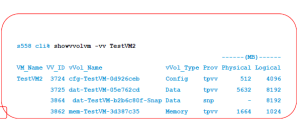One week from today (3rd February) VMware are advertising a big launch event, whilst it doesn’t specifically say its for VSphere 6 if its anything else I’ll change my name to VNXDude. Although VSphere 6 has been in public beta for some time it has been under NDA and so information about what is in the new release has been scarce.
What do we know?
What has been announced in the new version of VSphere is some improvements to FT, long distance VMotion plus the introduction of VVols. The number of game changing features being added to the previous few version of VSphere appears to have slowed, with the real emphasis being on developing the eco system – NSX, VSAN and VVols i.e. the foundations of the software defined datacentre. This makes sense since we are all now used to the idea of server virtualisation, allowing us to pool compute and gain agility and flexibility with a policy driven approach, the next stage is to take this to all elements of the data centre. To get VMware embedded as the platform of choice to manage networking, storage etc. would give VMware a real strangle hold across the data centre.
If next week is indeed the launch of VSphere 6 and VVol’s come as part of that, this will be one of the biggest changes in the way storage admins have done business in some time. VVols introduce a one to one relationship between VMDK files and backend volumes on the storage array. There will be no file system as VSphere will talk directly to the array, allowing the workload to be off loaded to the storage system. The storage system will also be able to directly expose its features such as RAID levels, replication and snapshot capabilities to VSphere, allowing the creation of policies matching VM requirements to storage capabilities. Check out this post I wrote previously if your interested in more details of VVols working with 3PAR.
VVol Videos
To help introduce the idea of VVols I have posted links to a couple of videos on the topic. The first is a discussion on VVols from The CurrentStatus web chat and the second is a VVol deep dive from VMworld, both really interesting and well worth a watch.
I’ll bring you more news next week if I’m correct, or if not I will be busy changing the domain to VNXDude.com.


